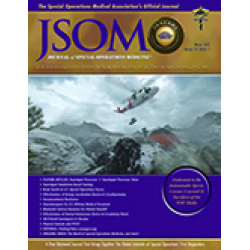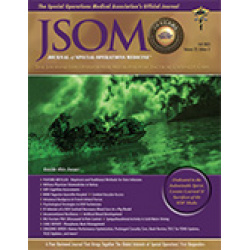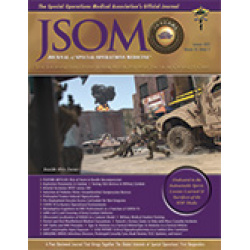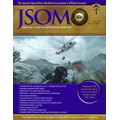Latest Products
Effects of Tourniquet Features on Application Processes
Wall P, Buising CM, Jensen J, White A, Davis J, Renner CH 99(5). 0 (Journal Article)
Background: We investigated emergency-use limb tourniquet design features effects on application processes (this paper) and times to complete those processes (companion paper). Methods: Sixty-four appliers watched training videos and then each applied all eight tourniquets: Combat Application Tourniquet Generation 7 (CAT7), SOF™ Tactical Tourniquet-Wide Generation 3 (SOFTTW3), SOF™ Tactical Tourniquet-Wide Generation 5 (SOFTTW5), Tactical Mechanical Tourniquet (TMT), OMNA Marine Tourniquet (OMT), X8T tourniquet (X8T), Tactical Ratcheting Medical Tourniquet (Tac RMT), and RapidStop™ Tourniquet (RST). Application processes were scored from videos. Results: Thirty-three appliers had no prior tourniquet experience. All 512 applications were placed proximal to the recipient's simulated distal thigh injury. Thirty-one appliers (13 with no experience) had 66 problem-free applications (18 by no experience appliers). Tightening-system mechanical problems were more frequent with windlass rod systems (26 losing hold of the rod, 27 redoing rod turns, and 58 struggling to secure the rod) versus ratchet systems (3 tooth skips and 16 advance failures). Thirty-five appliers (21 with no experience) had 68 applications (45 by no experience appliers) with an audible Doppler pulse when stating "Done"; causes involved premature stopping (53), inadequate strap pull (1 SOFTTW3, 1 RST), strap/redirect understanding problem (1 SOFTTW5, 1 X8T, 4 Tac RMT, 1 RST), tightening-system understanding problem (2 CAT7, 1 SOFTTW3, 1 TMT, 1 RST), and physical inability to secure (1 SOFTTW3). Fifty-three appliers (32 no experience) had 109 applications (64 by no experience appliers) not correctly secured. Six involved strap/redirect understanding problems: 4 Tac RMT, 1 X8T, 1 SOFTTW5; 103 involved improper securing of non-self-securing design features: 47 CAT7 (8 strap, 45 rod), 31 TMT (17 strap, 19 rod), 22 OMT (strap), and 3 SOFTTW3 (rod). Conclusion: Self-securing systems have process advantages. Because most emergent tourniquet recipients require transport, we believe tourniquet security is a critical design aspect. Decisions regarding tourniquet choices may become very different when both occlusion and tourniquet security are considered.


 Español
Español 




